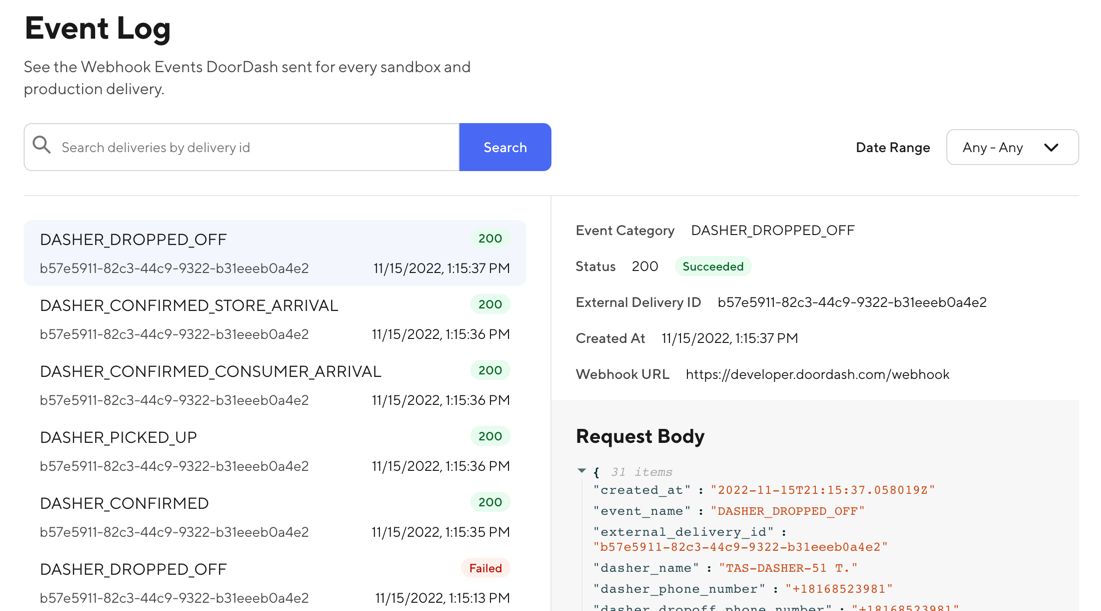Webhooks are a critical part of a successful on-demand delivery integration. They enable DoorDash to inform your integration about delivery updates, like when the Dasher has arrived at the pickup location or where they are along their route in real time. This real-time information lets you keep both the sender and receiver of the delivery up-to-date with precisely what’s happening.
It can be challenging to develop and test the part of your integration that receives and handles webhooks. How can you confirm that DoorDash sent a webhook that you were expecting to receive? How can you confirm that your application parsed the webhook details correctly?
We’re introducing Event Logs to answer exactly those kinds of questions. Event Logs is a new view in the Developer Portal that shows a history of all the webhooks sent to your integration. Each log includes the endpoint to which the webhook was sent, the HTTP response code DoorDash received from that endpoint, and the full body of the webhook that DoorDash sent. You can search for all the webhooks for a particular delivery ID or inspect all of the webhooks that were sent in a specific date range.

Enroute webhooks & other Drive API updates
Alongside the new Event Logs, we’ve also brought some new features to the Drive API:
enroutewebhooks can now be enabled for your integration, so you can receive frequent updates on the Dasher’s location- The new
dasher_allowed_vehiclesfield enables you to specify the transportation methods that a driverDasher can use to make the delivery:"car","bicycle"and/or"walking" - You can use the
itemsfield to provide more detail about what’s in the delivery; this detail can be seen by Dashers as they’re making the deliveries and by the receiver of the delivery on the tracking page
Event Logs and all of these new features are ready to use today! Check out the Event Logs view in the Developer Portal, and see the Drive API docs for more details on the new Drive API features.